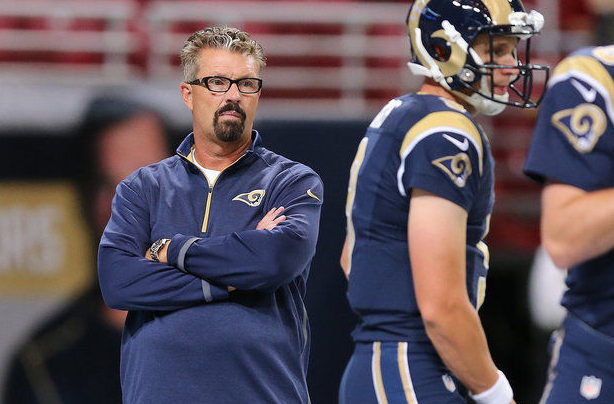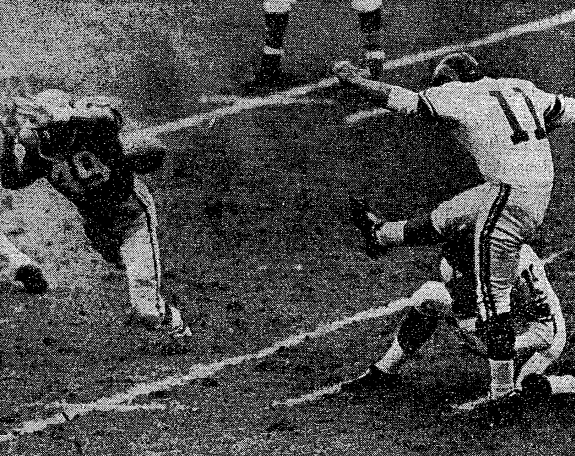The fewer points an NFL team allows in a game, the better its chances to win, right? Not necessarily. And believe me, I’m as stunned by that revelation as you are.
Just out of curiosity one day, I went to my favorite research site, pro-football-reference.com, and started wearing out the Play Index. I wanted to know exactly how often a club won when it gave up a specific number of points. Not something nebulous like “17 or less,” but 2 points, 3 points . . . all the way up to 50. (For the record, nobody has won allowing more than 48 points.)
The results caught me off guard. In my statistical naiveté, I envisioned a steadily descending line graph from 2 to 50, but that’s not what I got at all. No, I got plenty of ups and downs, some of which could be attributed to small sample size — how often does a team allow 18 points? — but not all.
My findings — I looked at regular-season games since the 1970 merger — are at the bottom. These are the bullet points:
● Teams have won more often when they’ve given up 14 points (.814) than when the’ve given up 9 (.794). Likewise:
21 (.564) vs. 16 (.520)
28 (.316) vs. 23 (.299)
32 (.225) vs. 26 (.206)
39 (.115) vs. 34 (.110)
48 (.055) vs. 37 (.052)
There you have it, folks. Conclusive evidence that it’s not always in a club’s best interest to “Hold that line!”
● This is why the whole “when a team allows 17 points or less” business (or 21 points or whatever) is misleading. The “or less” skews it, because lower point totals have really high winning percentages. Consider:
17 points or less: .789 (8,606 games/6,761-1,787-58 W-L-T)
21 points or less: .719 (11,311/8,097-3,138-76)
But . . . exactly 17 points = a .625 winning percentage (.164 lower than “17 points or less”) and exactly 21 points = .564 (.155 lower than “21 points or less”). Big differences.
● The highest point total that would still give you a 50-50 chance to win: 21 (.564). FYI: At 19 (.442) and 20 (.465) the odds are still against you.
A 1-in-3 chance: 25 (.351).
A 1-in-4 chance: 28 (.316).
A 1-in-5 chance: 32 (.225).
A 1-in-10 chance: 39 (.115).
● In some cases, you wonder whether what’s most important isn’t the points but the number of scores you allow. For instance, 16 points is probably four scores (a touchdown and three field goals), while 21 is probably three (touchdowns). Does that help explain why teams that give up 21 points win more often than those that give up 16? Do four scoring drives tend to consume more of the clock than three, giving the opponent less time of possession (and thus, less opportunity to score itself)?
Or how about this: Does allowing 21 points suggest the opposition might have missed a field goal try — since it’s rare a team doesn’t have at least one during a game? Missed field goal tries can cause major momentum swings, almost like turnovers. I’m just spitballing here. Heck, maybe it’s a quantitative thing: four scores amount to more “negative feedback” than three, regardless of their point value. Whatever the explanation, it’s fascinating. You wouldn’t think the reason would be sample size, because the total games aren’t dramatically different — 688 (16) vs. 899 (21).
You could raise the same questions for 28 (.316) and 23 (.299) — or: four TDs (usually) vs. two TDs and three field goals.
Anyway, it’s fun to speculate about. Maybe there’s a mathematical genius out there — or a psychiatrist — who can sort all this out for us. (I think I’ve already established I’m not that guy.)
The raw data, in case you’re interested:
[table width=”300 px”]
Pts,Win Pct,Games,W-L-T,
0,1.000,447,447-0-0,
2,1.000,7,7-0-0,
3,.989,545,539-6-0,
5,.923,13,12-1-0,
6,.936,439,409-26-4,
7,.962,879,844-31-4,
8,.929,28,26-2-0,
9,.794,286,227-59-0,
10,.869,1\,230,1\,060-152-18,
11,.818,33,27-6-0,
12,.706,177,125-52-0,
13,.720,1\,065,762-293-10,
14,.814,1\,089,884-201-4,
15,.580,150,87-63-0,
16,.520,688,356-328-4,
17,.625,1\,530,947-567-14,
18,.548,84,46-38-0,
19,.442,394,174-220-0,
20,.465,1\,328,611-703-14,
21,.564,899,505-390-4,
22,.438,217,95-122-0,
23,.299,810,239-565-6,
24,.371,1\,267,469-796-2,
25,.351,114,40-74-0,
26,.206,360,73-285-2,
27,.241,990,238-750-2,
28,.316,630,198-430-2,
29,.179,156,28-128-0,
30,.124,490,61-429-0,
31,.185,831,153-676-2,
32,.225,71,16-55-0,
33,.124,194,24-170-0,
34,.110,565,61-502-2,
35,.133,309,40-267-2,
36,.140,86,12-74-0,
37,.052,251,13-238-0,
38,.069,360,25-335-0,
39,.115,26,3-23-0,
40,.025,79,2-77-0,
41,.060,199,12-187-0,
42,.015,134,2-132-0,
43,.000,29,0-29-0,
44,.012,84,1-83-0,
45,.016,124,2-122-0,
46,.000,9,0-9-0,
47,.040,25,1-24-0,
48,.055,55,3-52-0,
49,.000,37,0-37-0,
50,.000,12,0-12-0,
[/table]
Source: pro-football-reference.com


